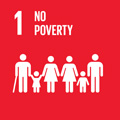- Docente: Marco Fincardi
- Credits: 8
- SSD: M-STO/04
- Language: Italian
- Teaching Mode: Traditional lectures
- Campus: Bologna
- Corso: Second cycle degree programme (LM) in Pedagogy - Science of education (cod. 9206)
-
from Feb 11, 2025 to Apr 29, 2025
Learning outcomes
At the end of the course, students will have acquired the required knowledge of historical research methodology, an understanding of the connection between the history of the welfare state and the characteristics of Italy’s institutions, as well as the political and formative system of the Italian state. Students will be capable of orally expounding their evaluations and viewpoints concerning historical studies and analyses. They will be capable of employing the tools and methods acquired in the historical field to broaden their knowledge and demonstrate a high degree of critical autonomy.
Course contents
Course contents
The purpose of the course is to analyze the genesis, events and evolution of the welfare state in light of recent issues arising in current debate.
Explanations and analyses of key terms and concepts will be provided to lay the foundations for critical thinking on the subject matter.
From a long-term perspective, and from a comparative analysis viewpoint, the course will look at events beginning from the birth of the modern state. These include the passage from forms of assistance, of a largely religious nature, for the needy, to nineteenth-century style philanthropism. It will conclude with an analysis of friendly societies and charity organizations, which developed with the industrial revolution in Europe, and provided assistance for workers of both sexes.
With an analysis of the diverse timelines of European states, particular attention will be given to the development of social legislation in Italy: from early laws safeguarding employment rights of the disabled, to employment rights for women and children. The course will then highlight how the two world wars impacted economic and social policy of European states, analyze the arrival of the ‘glorious’ age of the post-war years, and cover the intervening years up until the economic crisis of the early 1980s. These were years in which welfare criteria adopted until that time were reviewed and years which continue to characterize the age in which we live.
Painting a historical picture of the welfare state means painting a history of forms of assistance for the needy, welfare policies concerning old age and disability, safeguards of public health, and the family. It covers male and female workers’ employment rights, and paints a historical picture of educational systems and public schemes to ensure – from the second half of the 1800s – the most far-reaching schooling possible as a precondition for full citizenship.
N.B.: This is an upper-level history course. In order to follow the course, it is essential that students have a basic knowledge of contemporary history, from the study or consultation of suitable high school texts of E.J. Hobsbawm and M. Meriggi.
Readings/Bibliography
1) Mandatory texts:
Fulvio Conti, Gianni Silei, Breve storia dello stato sociale, Roma, Carocci, 2013
Marco Meriggi, L’Europa dall’Otto al Novecento, Roma, Carocci, 2006.
Eric J. Hobsbawm, Il secolo breve, Milano, Mondadori, 2014.
2)For non-attending students, one text chosen from the following:
Dalle società di mutuo soccorso alle conquiste del welfare state, a cura di Anna Salfi e Fiorenza Tarozzi, Roma, Ediesse, 2014.
Iganzio Masulli, Welfare State e patto sociale in Europa. Gran Bretagna, Germania, Francia, Italia 1945-1985, Bologna, Clueb, 2003.
Carl Polanyi, La grande trasformazione, Torino, Einaudi, 1976.
Michela Minesso, Madri Figli Welfare. Istituzioni e politiche dall’Italia liberale ai giorni nostri, Bologna, il Mulino, 2015.
Alessandra Pescarolo, Il lavoro delle donnenell’Italia contemporanea, Roma, Viella, 2019
Dorena Caroli, Un Welfare State senza benessere. Insegnanti, operai e contadini nel sistema di previdenza sociale dell'Unione Sovietica (1917-1939), Macerata, EUM, 2015
Teaching methods
Frontal lessons.
Assessment methods
The exam consists of an oral test on the topics of the texts indicated in the program and (in relation to attending students) on any other topic covered during the lessons. There is only one grade for both teaching modules. The oral interview has the purpose of evaluating the critical and methodological skills developed by the student during the lessons and / or during the reading and study of the chosen texts. It will start with a specific question and then will try to verify the students' ability to deal with a critical reasoning on the general topic of the course and in particular on the topics addressed in the chosen texts. A sufficient result will be obtained with a minimum knowledge of the topic and of the historical context, to reach a higher grade the student must demonstrate that they have clear basic notions of the general topic, but also that they can reason and develop a clear discussion and correct of the exam topic. Students are recommended to come to the exam with their chosen texts.
Teaching tools
Power point or filmed presentations
Office hours
See the website of Marco Fincardi
SDGs




This teaching activity contributes to the achievement of the Sustainable Development Goals of the UN 2030 Agenda.
